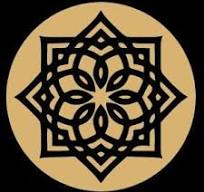A letter to future generations
I want to share with the readers a letter written by a prominent scholar of ancient Jewish poetry, or Piyyut, who would probably become one of the pillars of modern Judaic studies if not for his untimely death at the age of 54 in 1954. Menahem Zoolay was born in Galizia, Poland, came to study in the Lipshitz seminary for teachers in Jerusalem in 1921, and was taken to Germany by S.Z. Schocken as a tutor. Zoolay returned to Jerusalem in 1934 and dedicated the rest of his life to the study of Piyyut material found in the Cairo Genizah. While in Germany, he shared his thoughts of modern Jewish society and education with his teacher, R. Eliezer Meir Lipshitz. His words were written in 1927, yet they ring so true and relevant today. Here is the letter in my translation[i]:
רבי מורי הנכבד!… ימינו ימי מעבר מסדרי חיים לסדרי חיים. הישן נפגם… החיים פגמוהו אירופה פסלתו (ועוד רב כחה לפגום ולפסול לאחר כך הנבואות לשקיעתה) הפריחה נשמתו מתוכו והגוף, הלבוש הבטל וההולך, והחדש, זה אין בו עדיין כדי להניח את הדעת. כוחו ב”משכר” שבו. הוא מבריק, מדהים ומהפנט לשעה. נתפכח אדם משכרותו הרי טפלות ותפלות. חיי המחר לא נוצרו עדין אבל הם נוצרים והולכים. גדלים הם במעי האנושיות ונמצאים עוד בתקופת “סנדל”. יש שאיפה לזווג את נשמת הישן עם גוף החדש, למזגם וללוש מהם עיסת-חיים חדשה. אשרי המאמין בהצלחת זיווג זה
My esteemed teacher and master!… our time is one of transition from one manner of life to another. The old has been damaged… life damaged it and Europe denounced it (and Europe can still cause damage despite all the predictions of its demise). Europe drove the spirit away, and the body, the transient external garment, the new, is still not satisfying. Its lure is “intoxicating”. It is brilliant, amazing, and mesmerizing, but only temporarily. As one recovers from this drunkenness, he finds vanity and irrelevance. The life of tomorrow has not been created yet, but it is in a process of creation. It is being formed in the womb of humanity and is still fetal and two-dimensional. There is an aspiration to unite the spirit of old with the body of today, to merge and knead them not a new dough-of-life. Lucky is he who believes that this union is going to be successful.
ספקן אני בתיקונים בהשקפות עולם שאינם נוצרים מאליהם, משעה לשעה, מדור לדור, אלא נתקנים ונערכים בדעת, כדרך שמתקינים איזו תרופה בבית מרקחת… באתי לידי הרהורים על דבר צורת החיים של יהדות המחר (והרי ענין זה נוגע בראש ובראשונה בשאלת החינוך), הרי צורת חיים זו על כרחה שתיקבע על פי החינוך שיקבל הדור הבא. וטיב חינוך זה מהו? היש אפשרות ליצר שלמות בנפש היהודי הבא? היש אפשרות לחנכו ברוח היהדות וברוח ההשכלה הכללית כאחד מבלי שתיפגם הראשונה? עד כאן לא היו ביהדות “דת” ו”חיים” שמות מוחלקים. החיים היו הדת. כל מצוה הייתה קטע חיים. הייתה זו השקפה בריאה והגיונית של עם האחדות: מלוא כל הארץ כבודו. השגחה פרטית. אין מעשה בחיים שיעמוד מחוץ למסגרת המושג של האלוקות הממלאה את החיים. הרי שאין מעשה שאינו מצוה. מכאן ריבוי המצוות המעשיות.
I cast doubts on amendments to a worldview which do not occur organically, every day, every generation, but are rather decided and edited consciously the way medicines are prepared at the pharmacy… I started musing about the nature of tomorrow’s Judaism (which primarily stems from education). That lifestyle surely will be determined by the education of the future generation, and would be the nature of that education? Can we create perfection in the soul of tomorrow’s Jew? Can we educate him in the spirit of Judaism and general enlightenment without damaging the former? Until now “faith” and “life” were not two distinctive terms in Judaism. Life was faith. Every Mitzvah was a fragment of life. It was a healthy and logical perspective of a nation of unity: “God’s glory fills the earth”. Divine Providence. Therefore, there is no act which is not a mitzvah. That is why there are so many practical mitzvot.
כיום נפרדו המושגים, והחיים דחקו את רגלי הדת. פרחה החיות מן המצוות ואינן מתקיימות עוד, אצל חלק גדול על כל פנים, אלא בכוח ההרגל, ואיך נחנך את הבנים למצוות מעשיות מאובנות?… היהדות המערבית לא עשתה מהדת חיים אלא העמידתה על יד החיים זה אצל זה מבלי שירגישו בסתירה שביניהם… ובכן היכן הוא אותו טופס היהדות שאפשר לומר עליו כי הוא זה והוא ישמש לנו דוגמא לחינוך הדור הבא?
Today the terms have gone their separate ways and life has pushed faith aside. The liveliness has departed from the mitzvot and they observed, at least by the majority of people, as a routine only. How can we educate our children to observe practical Mitzvot if they seem ossified?… Western Judaism did not make faith a way of life but rather put it side by side with life, without letting them [faith and life] feel the contradiction between them… where is then that format of Judaism of which we can say “this is it!!!” and which will serve as a model for educating the next generation.
Zoolay’s words are poignant and heartfelt. Of particular interest is his argument that ideology of worldview cannot be written and imposed on people but rather grow organically, and the insight he provides at the end of the paragraph, of faith and live co-existing side by side, yet not interacting.
[i] מחקרי ירושלים בספרות עברית, כא, אסופת מחקרים לזכר מנחם זולאי, עמ’ 5-6






